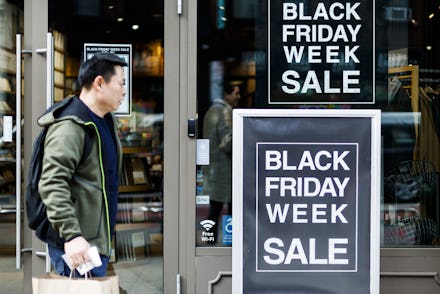Online shopping was supposed to kill malls, but they're far from dead

People have been predicting the death of brick and mortar retail since the advent of the internet. The assumption was that if shoppers could order anything their hearts desired and have it delivered to their doorstep, there’d be no need to schlep to the mall or wherever to peruse goods in-person.
The actual impact of online retail on IRL shopping has been complex. In the last couple of years, mall mainstays like Forever 21, Payless, Claire’s, Barney’s, Sears, and Toys ‘R’ Us have all filed for bankruptcy. But this year, in the weeks leading up to Thanksgiving, American malls saw a 2.5% increase in foot traffic compared to the same span of time last year. If brands people associate with the mall are dying out, but shoppers are still frequenting brick and mortar retail, what gives?
According to this year’s Annual Holiday Shopping Survey from Accenture, despite all the hand-wringing about the death of traditional retail, people still prefer browsing in-person. The report indicated 54% of shoppers find “inspiration” for gifts by visiting stores, which falls ahead of recommendations from friends and family or wishlists, for example.
The post-Thanksgiving shopping rush is also less of a thing than it has been in years past. Black Friday is more of a concept than a day anymore — this year, many retailers have had sales going on for weeks already. Thanksgiving falls quite late this year, compressing the holiday shopping season further, which could also help account for the pre-Turkey uptick in mall traffic.
Another reason to shop in-person? It’s a way of ensuring gifts don’t disappear after they’re delivered. The Accenture survey reported that 78% of respondents were taking preventative measures to avoid package theft, which has been a persistent problem in the age of Amazon. One study from 2017 found that 26 million Americans, or almost 8% of the population, has had merchandise swiped from their front porch. Around the holidays, when packages tend to contain more valuable goods than your average Prime delivery, shopping in person is a way to mitigate the risk of gifts going missing.
As Fast Company pointed out in its roundup of retail predictions for 2019, “the problem wasn’t that people had gotten too lazy to leave their homes; it’s that brands had become complacent about making shopping IRL a worthwhile experience.” There seems to be a resurgent interest in in-person shopping, provided companies figure out how to bridge the physical-digital divide in a way that feels seamless for consumers.
A lot of direct-to-consumer startups have lately realized the value of having a physical outpost where customers can engage with their products IRL. “We found that people still really love strolling down a shopping street and checking out products in person,” Paul Hedrick, the founder and CEO of Tecovas, a direct-to-consumer cowboy boot startup, told Fast Company. “We’ve found that interacting with the brand in store makes a customer more loyal.” Online-first brands like Allbirds, Everlane, Outdoor Voices, Away, and Glossier have all opened retail locations in recent months. Casper, the mattress startup, has plans to open 200 stores nationwide.
Essentially, in-person shopping isn’t dying, it’s just changing. The most successful brands will be the ones who weather the transition from traditional brick and mortar to a hybrid, online and IRL retail model. Consumers want to spend their money with brands that make the retail experience simple and seamless. Now it’s up to companies to meet people how and where they shop.